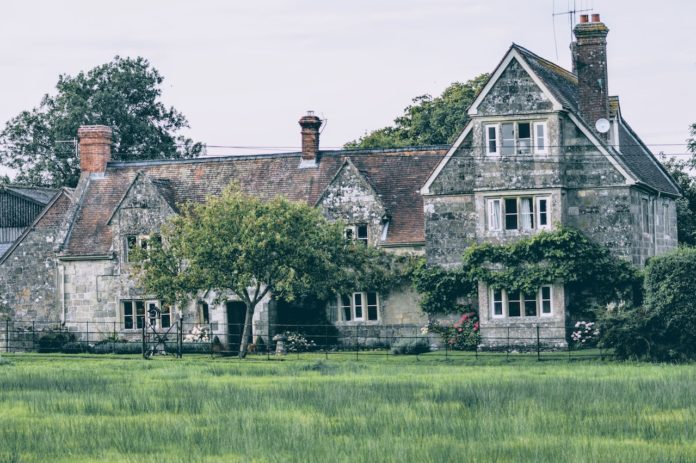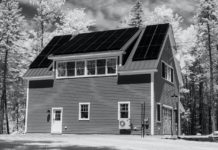A particular feeling of history, charm, and character that is frequently hard to discover in modern homes may make buying an ancient property a fascinating and gratifying experience. To ensure that you make an informed choice and steer clear of any future problems, there are several crucial elements you should take into account before investing.
A lower price may initially appear to be a fantastic deal when considering buying an older home. The property can have underlying problems, so it’s important to approach it cautiously. Yet, there are a variety of factors, many of which don’t necessarily point to issues, why an older property may be priced lower than comparable newer properties in the neighborhood.
If the price of the old house is low, there’s probably a catch.
If you’re considering buying an older home, a lower price could appear like a great deal. Yet you must move cautiously because the property might have underlying problems. There are numerous causes for older properties to be valued lower than comparable newer homes in the neighborhood, causes that don’t necessarily point to any issues.
Older homes may lack the contemporary features and facilities that many purchasers want, which may be one reason for a lower price. They might also need more upkeep and maintenance, which might take more time and money. To reflect these aspects and draw purchasers prepared to accept the hardships of owning an older property, sellers may price their properties lower.
The location of an older home is another factor that could affect its price. The home may be priced lower than similar homes in the region if it is located in a less attractive area or has poor accessibility. Similarly, the seller may reduce the home’s asking price if it needs expensive repairs or improvements.
A low price, however, could also be a sign that the property has significant problems. A mold infestation, structural damage, or foundation issues are some of the underlying issues that might be expensive to remedy. Hence, before making an offer, it’s crucial to have the property thoroughly evaluated by an expert. Before choosing, you must do your homework, consider all the variables that could affect the house’s price, and weigh your options.
You will be limited when it comes to renovating an old house
It’s important to remember that there can be restrictions on what you can do with the property while remodeling a historic house. These restrictions may result from zoning regulations, historical restrictions, or structural difficulties, among other things. Knowing these restrictions will enable you to make well-informed choices regarding the improvements you should make to the place to preserve its special charm and character.
Historical ones are the most frequent restrictions when restoring an ancient house. There can be limitations on the kinds of alterations you can make to the property if it’s in a historic area or has historical significance. Limitations on the materials, the colors you can use to paint the house, or the changes you can make to the exterior are limits. Some limitations have been put in place to protect the home’s and the neighborhood’s historical integrity.
Zoning regulations may constrain the capacity to remodel a historic home. If the property is situated in a certain zoning district, there may be restrictions on the alterations you are permitted to make. You might be required to keep a specific amount of green space or set a height restriction on any home expansions, for instance. Before beginning any improvements, you must know these rules to adhere to local ordinances.
Due to structural issues, you may be restricted in your capacity to renovate an old house. For instance, there can be load-bearing walls in existence that cannot be removed without endangering the home’s structural stability. Similarly, the foundation could not be strong enough to withstand some upgrades, such as building a second storey. It’s crucial to engage with a qualified contractor who can assist you in identifying any structural restrictions and creating a renovation plan that takes these restrictions into account.
Expect higher home insurance costs for old homes
Older homes can be great investments, but their home insurance premiums are frequently higher than those of newer ones. This is because of several elements, such as the age of the house, its condition, and the potential for concealed problems, that affect the risk of loss or damage.
The age of the home is one of the key factors contributing to higher home insurance rates for older homes. Electrical and plumbing systems, roofing, and other components become increasingly antiquated and vulnerable to damage as homes age. Also, older houses may have been constructed violating out-of-date building regulations, leaving them more susceptible to damage from natural disasters. These elements raise the risk of loss and can lead insurance providers to raise premiums.
Another element that may affect homeowners insurance costs is the house’s state. A home may have a higher risk of claims if it has not been properly maintained or if the damage is already present. For instance, if the house has a leaking roof, there may be a higher chance of water damage, costing money in claims. To reflect this greater risk, insurance firms could charge higher premiums.
The final factor that might affect house insurance rates is concealed problems. Numerous older houses contain undiscovered concerns, including defective wiring, plumbing issues, or asbestos. These problems may increase the likelihood of insurance claims for fires, water damage, or other problems and can be expensive to fix or replace. Insurance companies may charge higher premiums to pay the potential expense of these repairs or consider the risk of a claim connected to these problems.
Insects and pests infestations
Insect and pest infestations can seriously harm older homes, endanger the health of the residents, and cause major property damage. Older homes may be more prone to these issues for several reasons, including their age, condition, and location.
Older homes may be more susceptible to insect and pest infestations for various reasons, including age. Older houses are more prone to deterioration and decay, which can open up entryways for pests and insects. For instance, wood rot or other exterior damage to the house may allow termites or other wood-destroying insects to enter and do serious harm.
The state of the house might also affect how susceptible it is to insect and pest infestations. If the house hasn’t been kept up, it can have moisture issues that draw in cockroaches, rodents, or ants as pests. In addition, unkempt or congested spaces might serve as pests’ breeding grounds.
The incidence of insect and pest infestations in older dwellings can also be influenced by location. For instance, homes close to water or in wooded areas may be more susceptible to specific pests. Homes situated in high-humidity regions could also be more prone to mold and mildew growth, which can draw pests like cockroaches or silverfish.
There may be hazardous materials in an old home that needs to be removed
It’s crucial to be knowledgeable about any potential risks the property may have before acquiring an old house. Hazardous substances including asbestos, lead, and mold are frequent issues in older homes and can seriously endanger tenants’ health. To ensure the safety and well-being of everyone in the home, it is crucial to recognize the risks posed by these materials and take the necessary steps to resolve them.
Prior to the 1980s, the mineral asbestos was frequently utilized in building supplies. Many products, including insulation, flooring, and roofing materials, all used it. Tiny asbestos fibers that can cause major health issues including lung cancer and mesothelioma can be discharged into the air when these materials are disturbed. To find out if asbestos is present and to take the proper action to remediate it, it is crucial to have a home that was built before the 1980s evaluated by a competent specialist.
Another dangerous substance that could be found in older homes is lead. Prior to the 1970s, lead was frequently used in paint, and it can be found on windows, walls, and other surfaces. When lead paint is disturbed, lead dust that can be inhaled or ingested is produced, which can cause significant health issues like lead poisoning. If the house was constructed before the 1970s, it’s crucial to get it checked for lead paint and to take the necessary action if any is discovered.
Another typical risk that exists in older homes is mold. Mold can produce airborne spores that can trigger allergic reactions or respiratory issues and develop in environments with moisture issues. It’s crucial to have the home’s basement, attic, or bathroom evaluated for the presence of mold and to take the necessary action to address any mold that is discovered.
Is buying an old house worth it?
For individuals who value the distinctive character and charm of older homes, purchasing an old property may be a gratifying experience. Yet, it’s crucial to thoroughly weigh the potential advantages and difficulties involved before deciding to buy an older property.
The character and charm that come with an older property are among its main benefits. Older houses frequently have distinctive architectural features that are uncommon in younger homes, like crown molding, built-in cabinetry, and hardwood floors. These particulars can give the house character and a sense of history, enhancing its uniqueness.
The lower purchase price of an older home is another possible advantage. Older homes may be more affordable than newer homes of the same size and location, making them a desirable option for purchasers on a tight budget. Older houses may often have bigger lots or greater outdoor areas, adding to their value and appeal to homeowners.
It’s crucial to understand that buying an older house also has its share of difficulties. For example, older homes may require more care and repairs than newer properties. It might be necessary to upgrade the insulation, repair old plumbing and electrical systems, or address other emerging problems. When buying an older property because it can quickly mount up.
The existence of dangerous materials like asbestos or lead is another potential issue when purchasing an older house. If disturbed during construction or maintenance work, these materials can be hazardous and present major health concerns to building occupants. To ascertain whether any hazardous items are present and take the necessary action to address them, it is crucial to have the residence assessed by a qualified professional.
For people who like the distinct character and charm of older homes. To ensure that your selection is well-informed, it’s crucial to carefully weigh the potential advantages and difficulties involved and engage with a skilled real estate agent and home inspector. An older house can be a beautiful place to call home for many years with the correct planning and preparation.



